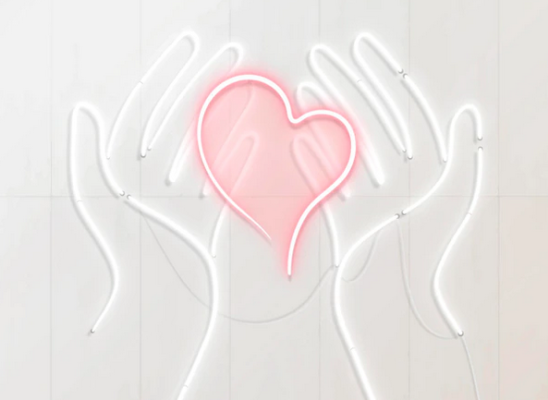Psychodermatology: A Effective Solution for Treating Hair Pulling in Children

Online test
Find out the severity of your symptoms with this free online test
When your child is losing hair, you want help. You want someone who can treat the condition. When it comes to skin and hair, dermatologists are the experts and may well be your first stop. But what happens when the hair loss is due to something that is not purely dermatological?
While trichotillomania (TTM) can occur at any age, onset is most often seen in children ages 10-13, and more common among females. And it is not uncommon for parents to seek out a dermatologist for help. Due to hair loss which can resemble alopecia areata, along with cosmetic concerns, children are often referred to a dermatologist for treatment. However, TTM and other BFRBs are classified as psychiatric disorders but present with dermatological issues too. And therein lies the dilemma.
Historically, medical specialties have been mostly compartmentalized with very little overlap. For the most part, each specialty treats disorders within their specialty area. Dermatologists treat skin and hair conditions and are generally not well-versed in psychiatry.
Recent advances in the understanding of BFRBs have prompted a new understanding of the interconnectedness mind-body and the need for a more comprehensive approach to care. With a significant number of patients presenting to dermatology clinics with both psychiatric and dermatological needs, the practice of dermatology has responded and a new way of managing these disorders is emerging.
Enter Psychodermatology
Psychodermatology is a subspecialty of dermatology that brings together psychiatry, psychology, pediatrics, and dermatology services to more comprehensively address the needs of people with psychodermatological disorders. Psychodermatological disorders are those disorders that have both dermatological and psychiatric components such as BFRBs like hair pulling or skin picking.
But treatment is more than just treating hair pulling. Comprehensive treatment means addressing the interpersonal issues that may play a role too. By bringing together multiple disciplines and strategies, treatment can address both cognitive and behavioral, and individual and family needs.
The Importance of Family Involvement
Because psychodermatology clinics often see young children, family involvement is a critical component to care. Parents are the largely the decision makers for the care of their children. How parents view the loss of hair (hair loss vs. hair pulling) can have a significant impact on who the child will see for care. A child’s primary environment is their family system and you, as their parent, play a powerful role in how they navigate their world. Your participation is important.
Living with TTM can have significant impacts on self-esteem and interpersonal functioning. Feelings of guilt, shame and embarrassment are commonly reported and can make interacting with others, even family, difficult. In fact, family functioning can be different for kids with TTM versus those who don’t. In one study, teens with TTM reported:
- more open expression of anger, aggression and conflict with family
- less family support
- less independence in decision-making
- less self-sufficiency and assertiveness among family members
- a trend for adolescents with TTM to report more family role problems
Psychodermatology clinics can be a powerful resource for families to learn how to support each other and develop more effective ways of communicating and coping. Family therapy can provide parents and their children a safe space to explore the dynamics that may be creating distress as well as place to extend support and encouragement.
A recent review of one psychodermatology program found that a combination of individual and family work provided a holistic approach to care and provided a place to address family issues and encourage support. For example, one patient tended to pull when doing homework in their room. By adopting a family model of care, one strategy included doing homework in the family room which allowed for family support.
During the course of your child’s treatment, you may encounter situations that you may not understand or be prepared for. One of the emerging themes they discovered in the review was that of appearance and gender, especially for girls. One example they shared was that of the difficulty for patients who either identified as male and/or knew they had a preference to the same sex. The resulting disconnect with their parents views led to comments that caused shame and further exacerbated the cycle of distress. They note that the two patients who had gender/sexuality issues disclosed this information during sessions, indicating that they felt safe within the therapeutic setting to do so. This disclosure allowed the patient and their parent to engage in therapist-facilitated discussions around these topics. Family therapy can give families a safe space to talk about the deeper issues and find resolution and healing.
The Bottom Line
While there is no single treatment approach or strategy that is right for everyone, psychodermatology is redefining dermatological treatment for TTM. It is creating an approach to care that is holistic and cognizant of the connection between the mind and the skin. It is allowing dermatologists to better understand, assess and treat even their littlest patients with confidence and support from behavioral health. It gives families a way to support each other and brings hope for healing.
References
1. Marshall, C., Taylor, R., & Bewley, A. (2016). Psychodermatology in clinical practice: Main principles. MJS Publishing. https://medicaljournalssweden.se/actadv/article/view/6013
2. The role of the family environment in adolescent hair pulling. (n.d.). TLC Foundation for Body-Focused Repetitive Behaviors | BFRB. https://www.bfrb.org/articles/the-role-of-the-family-environment-in-adolescent-hair-pulling
3. Murphy, Y. E., & Flessner, C. A. (2015). Family functioning in paediatric obsessive compulsive and related disorders. British Journal of Clinical Psychology, 54(4), 414-434. https://bpspsychub.onlinelibrary.wiley.com/doi/10.1111/bjc.12088
4. Doolan, B. J., Ali, R., & Baron, S. E. (2024). Optimizing treatment of compulsive hair pulling in children and young people: A case series from a pediatric psychodermatology service. The Journal of dermatology, 51(4), 612–613. https://pubmed.ncbi.nlm.nih.gov/38445800/
Online test
Find out the severity of your symptoms with this free online test
Start your journey with TrichStop
Take control of your life and find freedom from hair pulling through professional therapy and evidence-based behavioral techniques.
Start Now



